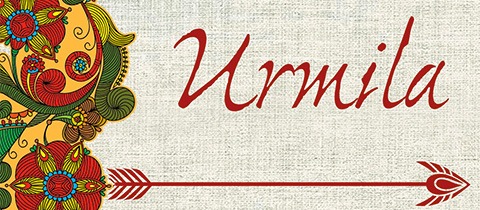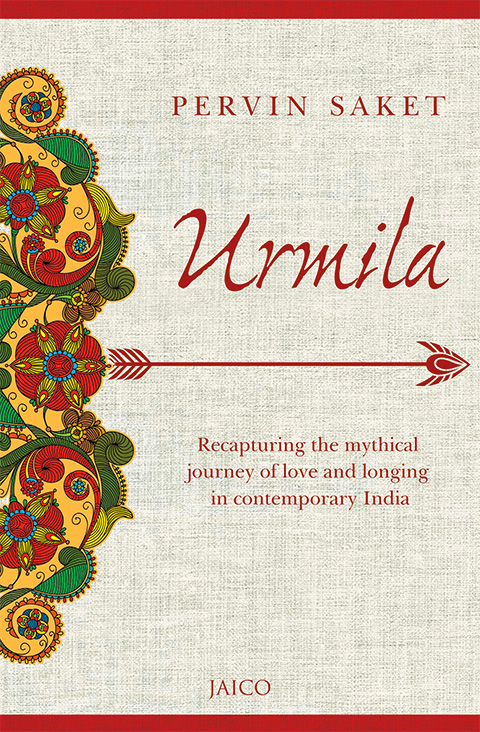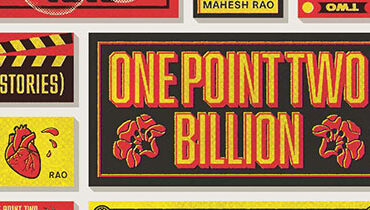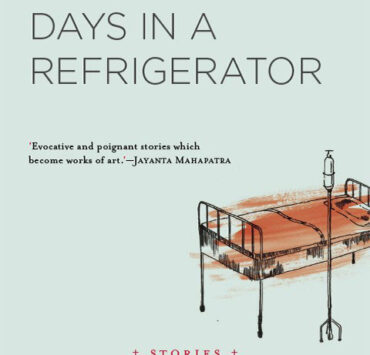The inevitability of any powerful tale is that, given enough repetition, it will quietly fold itself under the surface of our lives; waiting to see whether we recognise the familiar patterns, as we unwittingly take our own places in the story, compelled to play it out till the end.
The Ramayana is perhaps the most powerful tale of all, digging itself deep into the consciousness of over a billion people across Southeast Asia. As the story continues to reincarnate itself every year, the collective mytho-poetic imagination attempts to construct fresh narratives upon the ancient skeleton of the story.
A. K. Ramanujan in his essay Three Hundred Ramayanas tells us how these narratives—oral, written, and performance traditions, phrases, proverbs, and even sneers; marriage songs, narrative poems, place legends, temple myths, paintings, sculpture, and the many performing arts—all carry allusions to the Rama story. “These various texts not only relate to prior texts directly, to borrow or refute, but they relate to each other through this common code or common pool. Every author, if one may hazard a metaphor, dips into it and brings out a unique crystallisation, a new text with a unique texture and a fresh context […] No text is original, yet no telling is a mere retelling—and the story has no closure, although it may be enclosed in a text. In India and in Southeast Asia, no one ever reads the Ramayana or the Mahabharata for the first time. The stories are there, ‘always already’.”
Arshia Sattar writes in Lost Loves, “For all that the Ramayana is about righteous and rightful kingship and the battle between two equally matched protagonists, one ‘good’ and the other not quite so, it is also a love story, albeit one that is full of pain and sorrow. It is about learning to love someone and then losing them and about learning to live with the loss of love.”
The loss of love is at the heart of the story that Pervin Saket would like to tell with her debut novel Urmila. A peripheral character from the Hindu epic, the eponymous Urmila is transmuted into modern times, in an effort to push her into a primary role. Urmila, the wife of Lakshmana, now becomes Urmila Karmarkar, dutiful Maharashtrian baiko to Shree, living in modern-day Mumbai in lieu of Ayodhyan palaces.
The novel, riffing loosely off the epic, introduces her cousin Vani, an almost Dickensian caricature of a girl orphaned by the vagaries of fate. Obligingly taken in by Urmila’s family, she becomes a sort of dogsbody in her efforts to overcompensate with gratitude. Vani is, of course, the Sita surrogate; virtuous, preparing perfect tea and round rotis, scrubbing clothes, chopping vegetables ‘like a dream’, sleeping on a cot in the kitchen, her possessions stored in two cabinets above the gas cylinder and with nary a note of resentment for missing out on life’s privileges. “If you don’t study, Umi-tai, you’ll become like me!”
If all this sounds too goody-two-shoes to you, also consider that Vani comes equipped with the M-word: Manglik. A word which occasions crash-zoom close-ups and dramatic sound effects whenever uttered on the tackiest of ‘K-serials’ on television, featuring all that saas-bahu-saazish. We, as a nation, should have left such concepts behind in the last millennium, but 16 years into the 21st century and here we are, still making this a major plot point in popular fiction.
Her horoscope notwithstanding, Vani still manages to captivate Puru, elder brother to Urmila’s fiancé Shree, leading to an overwrought confrontation on Urmila’s wedding day. “Perhaps I was destined to find disappointment in those I loved. For all my love for Vani, on the most anticipated day of my life, she left me grasping a garland of dead flowers. She didn’t mean to steal the show on my wedding day; yet she did. Just as my husband probably didn’t mean to reject me on our wedding night; yet he did.”
Her brother-in-law Puru is modelled off Ramachandra of the epic. He is a curiously aseptic character throughout the book. Although Urmila tells us, “I paled before that man; in fact, I vanished altogether. When he entered the room, the rest of us were simply artefacts; when he left it, the room simply didn’t matter,” I failed to see any humanising facets to the man. This problem persists throughout the book; although we are told repeatedly of Vani’s love for Puru, Urmila’s love for Shree, and Shree’s devotion to Puru, we are never shown exactly how this affection comes to be. Inexplicably, these important relationships develop out of view of the narrative frame of the book. We are left to take Urmila’s word for it when she declares herself to be falling in love with Shree, who “liked me receded and ebbed… as backdrop, beautiful and unobtrusive. My sight was too loud, my clothes too bright, my hair too untamed, my laughter too quick. I had to learn restraint.”
It was in these descriptions of her husband’s indifference that I found Urmila to be most baffling. Urmila fails to kindle her husband’s desire, leaving him cold in two instances of clunkily orchestrated sex. And yet, in spite of the sexual ennui, her days are filled with the mundane machinations of matrimonial angst and the high-drama intrigues of her relatives. She is expected to function as a perfect hostess and an object of scrutiny at social gatherings. Her trials include organising a bhishi, a sort of business kitty-party in which both daughters-in-law are expected to uphold the honour of the house; predictably this teeters right back into soapy melodrama all over again.
Although Urmila comes from a world where arranged marriages are the norm, surely this sort of self-immolation on the altar of household duty is not what passes for normal, even among unevenly matched couples? There is a suffocating sexism inherent in the description of Urmila’s domestic travails, documented by all her attempts to mollify Shree, but love eludes her; as do the features of his face, when she tries to sublimate her feelings in canvas and paint.
But the tale still turns, the way it always does. The players step up to act out the familiar patterns we expect from the Ramayana: the villain casting aspersions on Vani’s chastity, the moralising dhobi, the jealousy and spiteful haranguing of a maid and a woman leading to the inevitable schism within the family, the long exile separating sons from their father, a father’s decline and death. The decay of familial relations means Shree leaves for Dubai instead of the Dandaka forest from the original tale, but his actions on departure remain the same: he selfishly expects Urmila to stay put in Mumbai, taking care of his parents, expecting her to tend to home and hearth.
This assumption of male self-centredness, even in the act of leaving her, is what finally makes Urmila snap, questioning the structure of male-female dichotomy in what is perhaps the only scene where she finally shows a bit of backbone, directly challenging her husband in an agitated collision of egos as he informs her that he is leaving. The key word here is ‘inform’, as he gives no weight at all to her opinions. His initial plan was to stealthily sneak away.
Thus deserted, Urmila begins an inevitable downward spiral, drowning her sorrows in paint, self-pity, and the emotional grief of disillusionment. Pervin Saket scatters vignettes from the 14 years of estrangement in non-linear fashion throughout the book, in an attempt to move us into wallowing with her main character for what feels like far too long. While these sketches are meant to give us portraits of Urmila’s interior struggle, the insipidly drawn and oftentimes whiny Urmila quickly falls into an endless litany of reminiscences that ought to be accompanied by the trembling notes of the sarangi. With trademark navel-gazing, Urmila has the ability to turn even a clock on the wall or a cobbler eating lunch into an extended metaphor about her failed marriage.
While Ramanujan does state that the “separation of loved ones (vipralambha) is the central mood” of the Ramayana, “setting the tone for the many separations throughout the work”, one does feel the descriptions of Urmila’s viraha seem overextended, occasionally delivering moments reminiscent of a pulp fiction heroine. “The last stage of hope is the abandonment of symbols. The symbols adorn me, simultaneously providing a mockery of my marriage and the collage of a dream. Perhaps one day, Shree will embody everything the symbols stand for. For now, the rings, bindis, necklaces, and sindoor act as substitutes. They touch my fingertips and the gaps of my toes, the cleft of my breasts and the tip of my forehead. They caress me where I thirst for his touch.” And when Saket tells us that her husband and sister are the two loves of Urmila’s life, the pomposity seems unsupported, unearned by neither Shree nor Vani.
To her credit, Saket excels at deft descriptions of contemporary upper-middle-class life in Maharashtrian society. In her hands, we get a clear-eyed look at Urmila’s long-married parents that will have some readers laughing and wincing in recognition. “Our house never saw roses or greeting cards, never knew the spark of a finger against a cheek or the whiff of musky cologne. My mother never wore chiffon saris and my father never seemed to notice the rustle of her clothes. In our tiny 1BHK, I slept between my parents every night […] They were always talking about my marriage, but not once did they make marriage attractive. No compliments, no shared jokes, no secret eye contact, no shoulder rubs, not even a pet name. Theirs was an arrangement of course, as I knew mine would also be, but did it have to be so loveless?”
Urmila resolves the matter of the missing husband in a surprising and rather satisfactory way, swiftly picking up the pieces of our heroine’s life in the last 50 pages. The ending, at least is not diluted and weakened by being stretched out into overdone sequences. One feels slightly wistful at the wasted potential inherent in this book—a great premise, some snappy turns of phrase, but beset with problems such as the clumsy narrative shifts in the flashbacks. Still, there is enough material here to empathise with, which will surely give troubled housewives some measure of cathartic relief, in much the same manner as the afternoon soap-operas on television do.
[Jaico Publishing House; ISBN 9788184956665]








